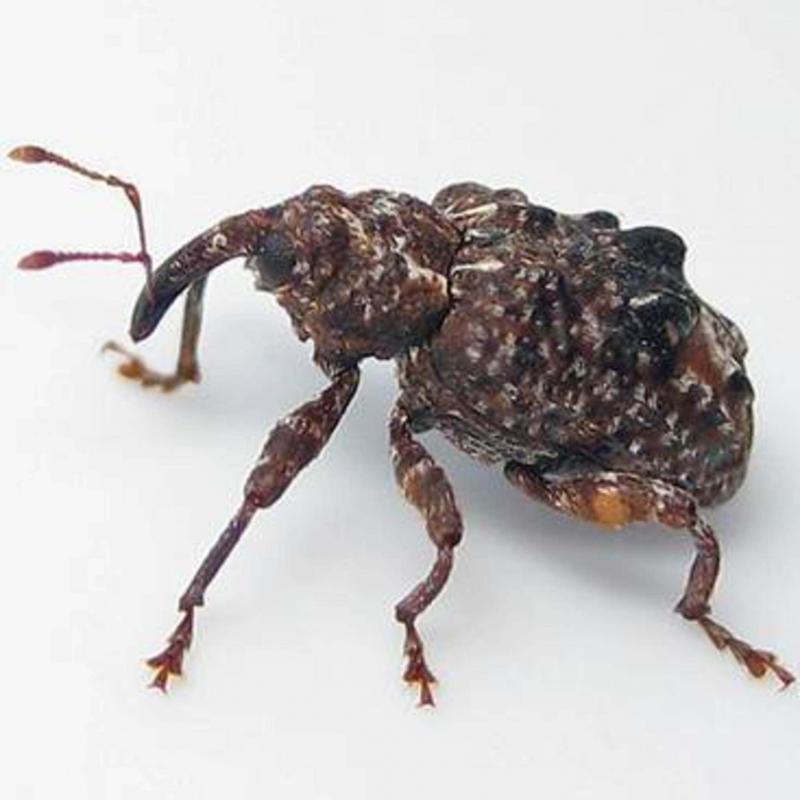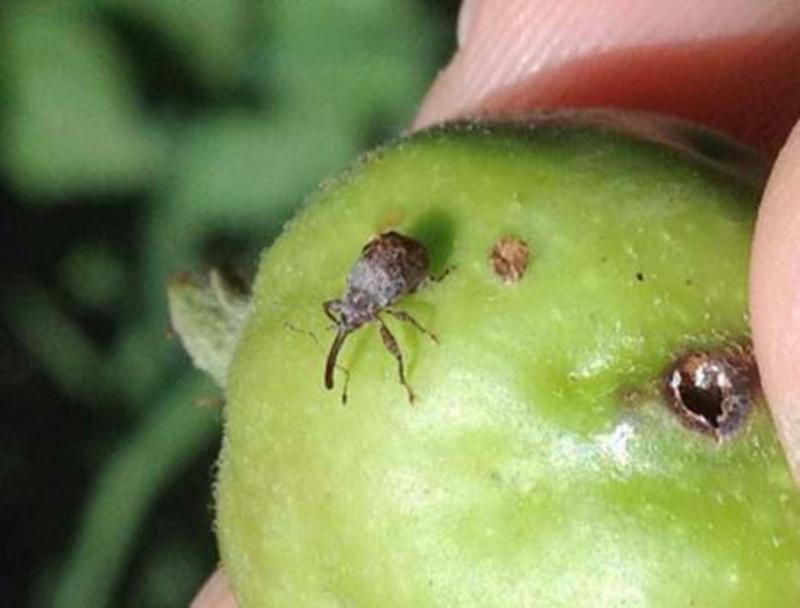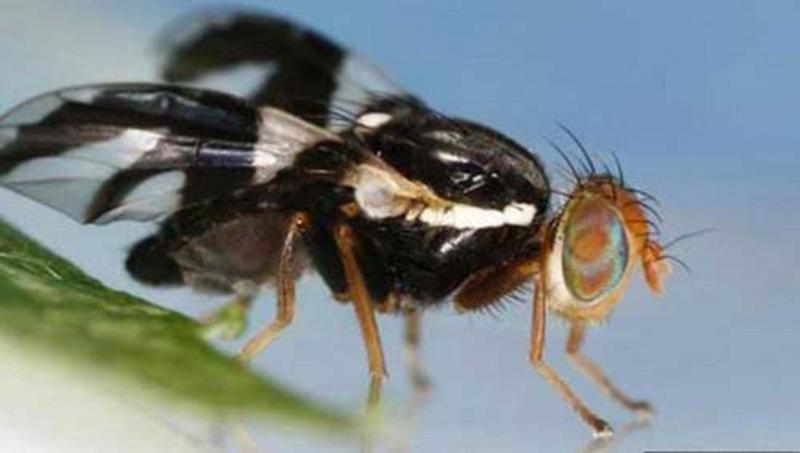
Adult plum curculio

An exit hole made by a plum curculio in an apple.

Apple maggot fly
Insects are known to appear in yearly cycles on all infested stone fruits. Plum curculio damage has been increasingly common in the recent past, but this insect can also make apples, cherries and apricots completely inedible. These insects, called weevils, are usually most active during spring, especially if there is reasonably high humidity, periods of cloudy weather, and prolonged warm temperatures. It is a native weevil that usually appears south of us, but lately I have been seeing it on fruit in Winnipeg yards.
Plum curculios are strongly attracted to the fruit. This insect is easy to identify by its curved snout which looks like a miniature elephant’s trunk. The adults are four to six millimetres long. The female curculio cuts a small visible crescent shape slit in the fruit where she lays the eggs and they are laid just under the skin.
Infested fruit are undesirable to most people for eating. The major and most significant key to controlling this increasingly serious pest is to remove all fallen fruit on the ground leaving nothing to remain, especially over winter. Even during the summer, regular removal of fallen fruit is strongly recommended. If the skin of the fallen fruit does not show any signs of damage, you might be able to donate that fruit to a worthwhile humanitarian cause — assuming, of course, you are not interested in eating the fruit yourself. Fallen fruit can be properly composted in the yard, or removed entirely from the property.
The apple maggot fly has a similar pattern of infestation during the early part of spring as the plum curculio. I wrote about his pest in my column a number of years ago. The egg-rearing feature of the apple maggot fly is somewhat different from the plum curculio. The infested fruit which have hatched from the eggs quickly grow into larvae, which is the next transitional phase of the insect. The physical change that occur in these insects is called metamorphosis.
Here is the key thing to note for controlling both pests: once the fruit is on the ground, the insects will metamorphose into pupae and bore about five centimetres into the soil where they will ultimately hibernate over winter. It is very critical to pick up all fallen fruit in late summer on a daily basis before the pupae have a chance to hibernate. Do not store fallen fruit in piles in the corner of the yard or any other outside exposed location.
Ideally you should cut up the fruit and add it to your compost pile. If you do not have a compost bin, you can dispose of the fruit in municipal waste bins.
There is a trap method of controlling the adults of both pests without using any pesticide sprays. I wrote about this trap method for apples in previous columns over the years. The trap method is unfortunately not suitable for most plums, all cherries and all apricots. Using stiff but flexible non-rusting wire, hang "traps" that look like plums and apples. The traps can be made with spherical similar-sized plastic or nylon Christmas tree ornaments. Paint each ornament with Tanglefoot carefully as it will ruin clothing.
Sprinkle fruit-essence crystals on the Tanglefoot to attract the insects. Trapped insects can clog up the Tanglefoot balls, so you will likely need to reapply it. This is a messy task, and some gardeners simply put up a new set of balls. If you have a lot of trapped insects, you may have to repeat the procedure more than two times during the summer.
When the fruit falls to the ground, the maggots leave the fruit and burrow about 5 centimetres during the fall. In the soil, the maggots molt and undergo a physical change to become pupae. The following spring, the pupae change into adult insects that will emerge from the ground in mid-June to early July. The growth cycle of the insects is then repeated. That is why one should never let infested apples, plum, apricots or cherries rot on the ground. If nearby neighbours have fruit trees, you could let them know about the control. Insects emerging from their fallen fruit may infest your fruit.
Formerly approved pesticides for these pests are no longer available for domestic homeowners to my knowledge. The organic control by immediately removing all dropped fruit as described earlier is superior, effective and requires no pesticides.
Enjoy your fruit trees, and collect all fallen apples.
Michael Allen M.Sc.F., RPF (ret’d) is a consulting urban forester, tree diagnostician and certified arborist. He owns Viburnum Tree Experts. He makes house and garden visits, diagnoses problematic and hazardous trees. He can be reached at 204-831-6503 or 204-223-7709
viburnumtrees@shaw.ca



